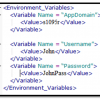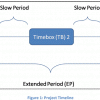|
|
Software Security: Managing the Attack Surface We are a gadget-loving society and we love our gadgets to do fun things that keep us entertained or go above and beyond basic functionality. When it comes to our technological wonders, we are attracted by the "cool factor." As Bryan Sullivan notes in this article, unfortuntately those bells and whistles come with a price that must be paid for the sake of security.
|
|
 |
XXX Automation In this article, Dion Johnson takes a peek at an automation approach that isn't for the immature or the inexperienced. It is, however, for testers interesting in improving their scripting technique. But don't let the title fool you—you can use Dion's "XML, XPath, and Xcitement" approach in broad daylight.
|
|
 |
Understanding Software Performance Testing, Part 4 Most people don't fully understand the complexities and scope of a software performance test. Too often performance testing is assessed in the same manner as functional testing and, as a result, fails miserably. In the final installment of this four-part series Dale examines what it takes to properly plan, analyze, design, and implement a basic performance test. This is not a discussion of advanced performance techniques or analytical methods; these are the basic problems that must be addressed in software performance testing.
|
|
|
|
Independent Testers? Or Independent Thinkers? In this article, Lisa Crispin recalls a time when testers alone were solely responsible for software quality, and compares that to more modern thinking where collaboration between developers and testers is king. Software quality is everyone's job, sometimes it takes independence to get there.
|
|
|
|
Deception and Self-deception in Software Testing Untruths about software testing are common. Managers, programmers, and other people on software projects don't always mean to deceive. Quite often, they fool themselves into believing what they want to believe. But sometimes they lie deliberately and even pressure testers to lie. And testers can also practice deceptions and self-deceptions of their own. In this column, Fiona Charles describes four categories of common deceptions and self-deceptions in testing and outlines what testers need to do to address them.
|
|
|
|
Fool Me Once Linda Hayes is a practitioner and proponent of test automation, but she recognizes that much of testing remains manual. The unexpected twist, though, is that she lays the blame for automation's chilly reception squarely on the shoulders of early approaches to automation—namely capture/playback. In this article, Linda takes a look at automation's history and offers some suggestions for its future.
|
|
 |
Understanding Software Performance Testing, Part 3 Most people don't fully understand the complexities and scope of a software performance test. Too often, performance testing is assessed in the same manner as functional testing and, as a result, fails miserably. In this four-part series we will examine what it takes to properly plan, analyze, design, and implement a basic performance test. This is not a discussion of advanced performance techniques or analytical methods; these are the basic problems that must be addressed in software performance testing.
|
|
 |
Timeboxed ROI Many automation projects often have boxes of time that are deemed more critical than others. As a byproduct, project members may only give attention to test automation implementation and its returns during those time periods, as opposed to focusing on the returns over the life of the implementation. While there are serious pitfalls to this "timeboxed" view of automation, Dion Johnson describes some situations where it may be acceptable and even necessary.
|
|
|
|
Continuous Integration and Testing Lisa Crispin explains in this article how CI has become an absolute necessity for any software development team in this day and age. For those who have yet to fully embrace CI, this article gives you some great reasons you should, along with some helpful resources to get you started.
|
|
 |
Understanding Software Performance Testing, Part 2 Most people don't fully understand the complexities and scope of a software performance test. Too often performance testing is assessed in the same manner as functional testing and, as a result, fails miserably. In this four-part series we will examine what it takes to properly plan, analyze, design, and implement a basic performance test. This is not a discussion of advanced performance techniques or analytical methods; these are the basic problems that must be addressed in software performance testing.
|
|










